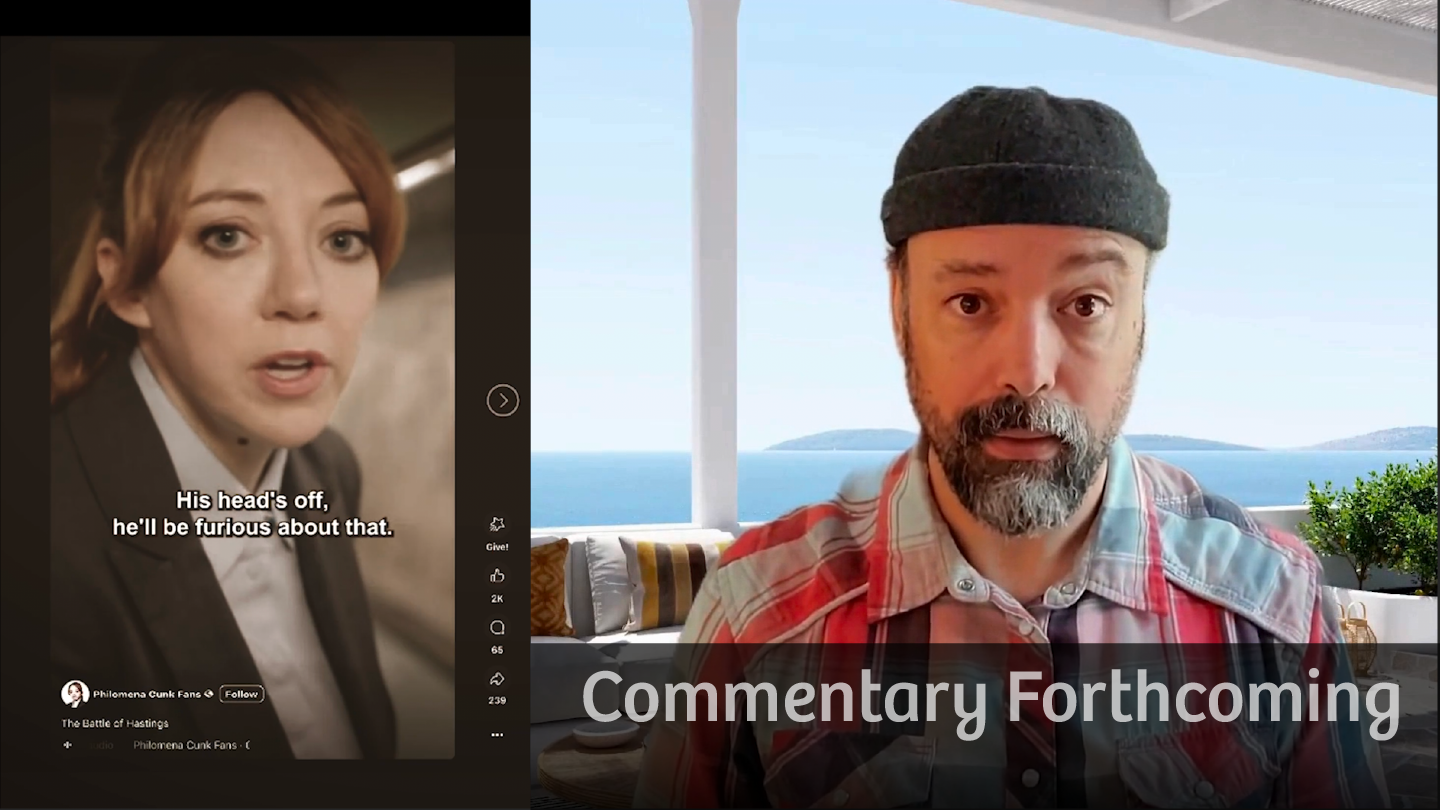Is that a butthole... nobody knows why. Exploring British Humour on a Facebook short.

Is That a Butthole? Nobody Knows Why.
There comes a time in every person’s life when they must look deeply into the woven threads of history and ask the most pressing question of all:
Is that a butthole?
Nobody knows why.
This immortal line — lifted from a delightfully absurd and erudite video commentary on the Bayeux Tapestry (not “Baywatch,” but let’s not rule out the sequel) — is less a question than a metaphysical event. It punctures the otherwise dignified narrative of the Norman conquest with the comedic precision of British wit, shaped like an arrow aimed squarely at the eye of solemn scholarship.
Let’s not get tangled in semantics here. Yes, it’s the Bayeux Tapestry — the medieval, needle-and-thread Netflix docu-series embroidered across nearly 70 metres of linen, depicting the events leading up to the 1066 Battle of Hastings. It is one of the most respected visual narratives in Western history. It is also, thanks to one sharply observant British narrator, now forever associated with the cosmic mystery of the lion’s… posterior.
again, nothing but air
Courage in Chaos… and a Butthole
The video in question manages what many academic historians have failed to do: make the Bayeux Tapestry funnier than a pub quiz after six pints of bitter. It starts strong — interpreting a lion chasing its own tail as a metaphor for “courage in chaos.”
Profound. Stirring. Aristotelian.
Then it happens.
A pause. The sacred rhetorical pause. The narrator leans into the space between thought and giggle. “Also, there’s a little butthole here.”
Now, this is not just juvenile humour (though let’s be honest — it absolutely is). This is rhetoric in its purest, most Socratic form. To wit: Socrates did not point at buttholes, but he did question the seemingly unquestionable. Is that a symbol of nobility? Or is it just a small circular stitch that looks like a bum? And if it is a bum — why would the tapestry makers include it? Were they having a laugh? Were they early satirists? Were they French?
Nobody knows why.
The Arrow in the Eye of Destiny
Just as we recover from the backside of British history, we are treated to its piercing end. Our dear protagonist, Harold Godwinson — who may or may not be clutching a mysterious object in Panel 57 — wins the war (briefly), then gets shot in the eye with an arrow. Then he dies.
“But nobody knows why,” says the narrator, deadpan.
Except… we kind of do. It was the arrow in the eye.
This line lands like a Socratic punchline: deliberately obtuse to expose the absurdity of pretending we know more than we do. She recognizes that the tension between serious inquiry and satirical detachment is where real insight lies — and also, where the comedy is.
Tapestries and Tell-Tales
Now, let’s address the LLM in the room: the word “tapestry.”
It’s a favourite of large language models trying to sound profound. “The rich tapestry of human experience,” we say, as though verbosity implies depth. It’s become a cliché, a dead metaphor stitched into every AI-generated essay like Harold’s lifeless body into the final panel of Bayeux.
But this video — this glorious, bum-spotting, eye-arrowing video — earns the right to use “tapestry.” It’s not metaphor. It’s literal. It’s embroidered wool on linen. And more than that, it’s a living document of absurdity, ambition, and possibly bottom-related symbolism.
In Conclusion: Nobody Knows Why
This video is a reminder that humour and history are not enemies. They are just two knights on the same tapestry, jousting with satire and sincerity. We need moments like this — where a pause, a laugh, and a well-placed “nobody knows why” can make us engage with history not as distant observers but as curious, chuckling humans.
So yes. That might be a butthole.
And yes. The arrow probably killed him.
But if we’re being honest — and this article tries to be — the best things in life are stitched together in riddles.
Nobody knows why. And that’s what makes it art.
Plato Re-Imagined
This course offers 32 comprehensive lectures exploring most of Plato's dialogues. These lectures guide students toward a consilient understanding of the divine—a concept that harmonizes knowledge across disciplines and resonates with secular and religious leaders. As a bonus, Lecture #33 focuses on consilience, demonstrating how different fields of knowledge can converge to form a unified understanding.
